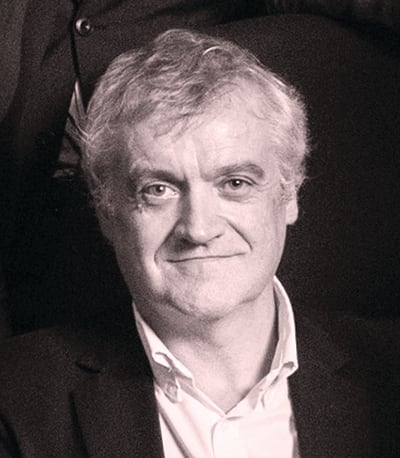
‘Design teams remain wedded to design reviews which are focused on 2D drawings with no intelligence. This needs to change.’ Dale Sinclair, Aecom
With the complexity of design increasing, it is imperative that we allow the collaborative effort to embrace the challenges of the future, says Dale Sinclair, director of technical practice, architecture, at Aecom and author of the Overview to the RIBA Plan of Work 2020
The coronavirus pandemic has caused major disruption around the world, so much so that we are now having to adjust to a ‘new normal’. For architecture and design, it is vital that project teams adapt to meet the needs of clients as they continue to explore new ways to design and make buildings. Although this process in already place, the acceleration towards the digitally enabled ‘team of the future’, that we thought would take years is now underway.
Due to the outbreak of Covid-19, those who were initially resistant to change have now opened their eyes to the art of the possible in the virtual realm.
The term collaboration is often held up as the answer to materially better outcomes. Whether these are social, environmental or economic, we are told that we should collaborate more. But what does this mean beyond contractual commitments that foster cooperation rather than collaboration? How can design teams work effectively to ensure they deliver to their best?
At its simplest level, collaboration is about ensuring that roles and responsibilities are clear, and actions are transparent. This also means avoiding confusion as to who should do what and when.
The RIBA Plan of Work 2020 acknowledges the difficultly of achieving this due to several reasons. These include the various demands from clients, the complexities of dealing with a wide range of sites, the intricacies of each sector and the fact that many project stakeholders, such as planners, sit outside the collaborative bubble.
At present, many traditional workflows sit alongside, rather than integrated with, our collaborative digital platforms. Design teams remain wedded to design reviews which are focused on 2D drawings with no intelligence. This needs to change.
The UK BIM Framework acts as the springboard towards robust governance of project data – a well set up digital environment allows for a truly collaborative process. VR design reviews, specifications linked to object-based modelling and 3D data-rich models are also becoming business as usual.
Digital twins, analytics for predicted maintenance and structured data enable artificial intelligence tools to detect anomalies in models, particularly as they learn more about the design process. These are some of the innovations which highlight that we are on the cusp of a data revolution and therefore this needs to be embraced by everyone in the project team.
A data-centric world requires transformation of the design process itself. Using digital libraries enables us to capture the knowledge in construction and VR-ready spaces which can then be rapidly assembled for collaborative sessions with design and client teams. Using this approach, limits the amount of decision making needed which is crucial to reducing the number of design iterations throughout the project.
With the complexity of design increasing, it is imperative that we allow the collaborative effort to embrace the challenges of the future. This includes making buildings and places positive contributors to a net zero society and improved social outcomes. A digital-led process, alongside a diverse and collaborative workforce, and the welcoming of new members to the design team including data scientists, biologists and anthropologists will allow us to better address the needs of the environment and individual communities. By doing so, together we can build better legacies for generations to come.












